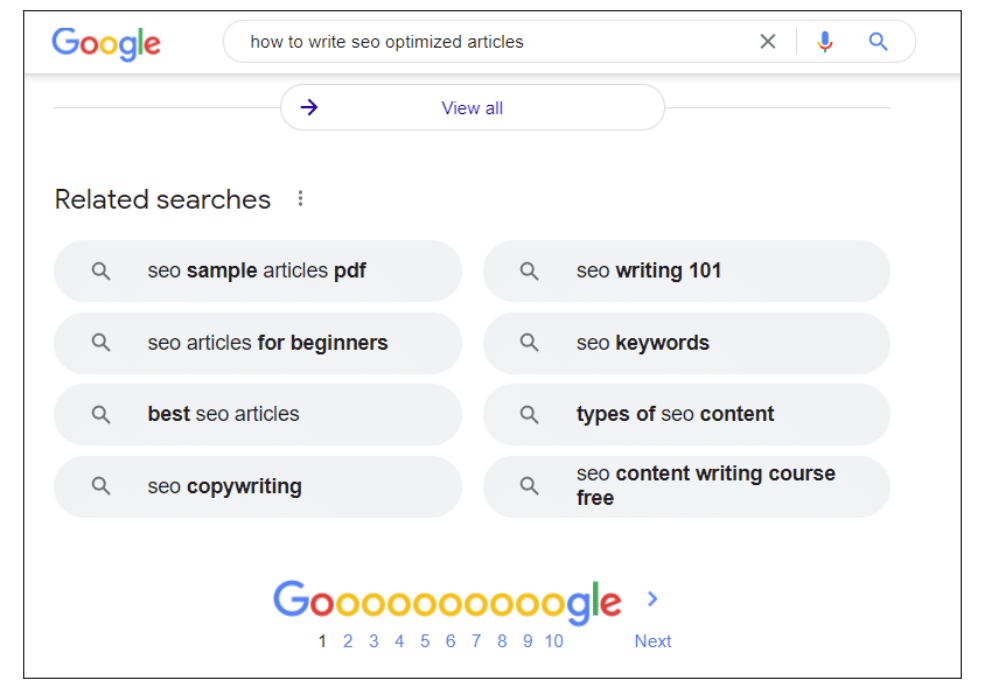You’ve heard about SEO and how it improves site rankings, and ultimately, conversions. But no one talks nearly as much about a user’s search intent and how much impact it has on your PR content strategy.
If you want to reach your audience, drive organic traffic to your website, and increase conversions, you’ll need to connect with your audience on a deeper level, using search intent.
Understanding search intent will offer you valuable insights for optimizing your content to increase conversions. You need to understand the reason behind users’ queries and provide relevant information based on it.
A good grasp of user intent goes beyond knowing the keywords your audiences use to find content. Creating keyword-filled content that doesn’t provide useful information to your audience will not attract them nor generate a positive ROI for your PR campaigns.
How do you determine search intent and how can you use it to increase conversions for your content campaign?
What is search intent?
Search intent or keyword intent describes the reason behind a search engine query.
While earlier iterations of the Google algorithm were keyword-centric, Google has now pivoted to a user-centric model. In other words, it now goes beyond individual searches and analyzes user behavior, including the user’s past searches, to provide useful results.
For example; why are users searching for PR agencies? Are they looking to book a consultation? Or do they have a particular company in mind? Understanding user intent makes it easier to recognize why different people could enter a similar query on a search engine but receive different search results.
It all boils down to the reasoning behind the search intent and how to use it to optimize your SEM and SEO campaign.
Moreover, a searcher’s query could also cover questions like:
- What?
- How?
- When?
- Where?
Therefore, “what is the best way to travel to New York?” will have specific answers come up as featured snippets. In the search below, Google presented articles about different transport modes going to New York and within the city itself.
By contrast, “How to travel to New York?” brought up mostly travel advisories as a result of COVID-19 restrictions.
Why are the two search results different despite being similar? The first search query refers specifically to different modes of transport, while the second deals with how to get to New York – including travel requirements and restrictions.
You must optimize your content for relevance and keyword intent to rank higher on Google and drive conversions.
How can you optimize for search intent?
We’ve established that understanding search intent is a crucial part of an effective SEO strategy. But how do you tackle each user query, and optimize your content in a way that satisfies search intent?
1. Analyze ranking content
First, you must analyze top-ranking pages that rank for your target keyword. Look at the content format, length, and topic. Then, align your content with what users want.
What kind of content is already ranking in search and why? Are they predominantly list articles, how-to guides, videos, or news?
While conducting your keyword research, aim for lower competition keywords to have a better chance of ranking higher on Google. Once you know the kind of content that ranks for your chosen keywords, review the keyword density so your content doesn’t read like you wrote it just to attract searches. This will help to create a more valuable piece for your target audience.
The best way to do this is to analyze the top five SERP results and create a cohesive piece using thorough research.
Most of the time you’ll end up with content optimized for informational intent — that’s okay. What matters most is you’ve created valuable content with an ideal answer for potential customers.
2. Look at the related searches
Search engines provide users with the most relevant content to a search query. It does that by showing a list of related searches at the bottom of each search result page.
When you’re looking for blog post ideas, note these related SERP searches, as they can inspire new ideas. You can find this by typing in your keywords and scrolling to the bottom of the search results page. There, you’ll see keyword variations related to your specific keyword that you can optimize for.
This information is valuable because it gives you an idea of your target audience’s intent through related questions. Moreover, People Also Ask (PAA) boxes, Adword ads, Knowledge cards, and video results may also help you infer the intent of the query.
How? Because Google shows certain SERP features depending on user intent. By optimizing your content based on these results, you increase your chances of a higher google ranking and conversion.
3. Craft SEO-optimized content
Now you know more about the intent behind a search term or query, it’s time to plan out and craft your content.
While you’re at it, match metadata, descriptions, and content type to the intent. Start with formatting the title tags, H1 and H2s to reflect your target keywords. Not only does this help you rank higher, but it makes it easier for search engines to navigate your pages and index them as relevant search results.
Understanding search intent will enable you to create content with their interests and needs at heart. It’ll also help you target SEO-optimized keywords that respond to this intent. The faster your content answers their questions, the longer they stay on your website and enjoy a better user experience.
Bottom line
Understanding search intent will make a huge difference in your SEO and digital marketing PR campaign. The more closely your content matches search intent, the better your chances of ranking well in the SERPs.
Look at other relevant blogs in your industry and review them. Then, optimize your content for different search intents. Be specific and avoid mismatching content types. If you’re optimizing content for navigational search intent, ensure you’re targeting low-competition, long-tail keywords surrounding a specific brand or product. This will increase organic traffic and landing page and website conversions.
Discovering and analyzing search intent is not an easy task. But the payoff in terms of increased traffic is worth the time and effort you spend on optimizing your content











